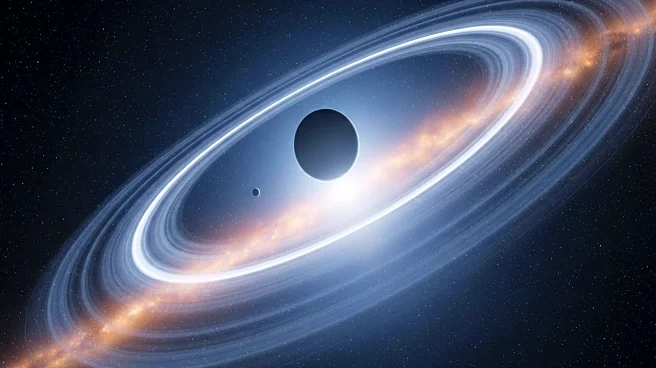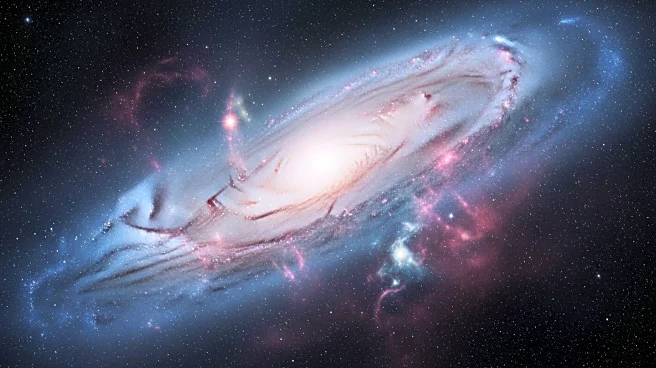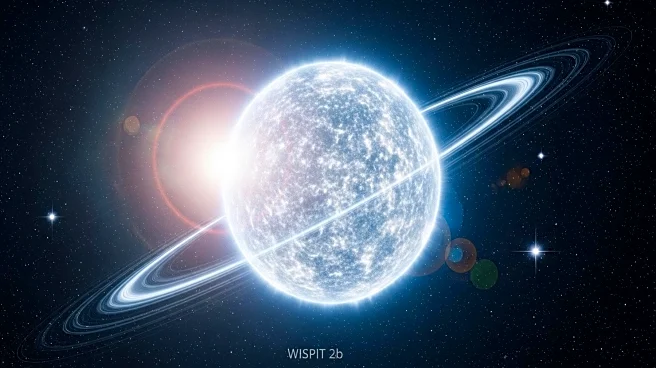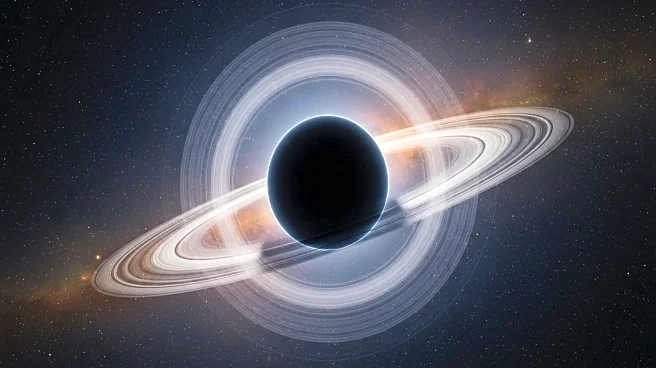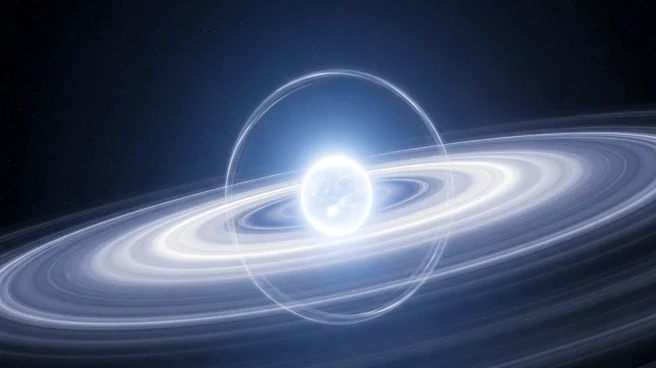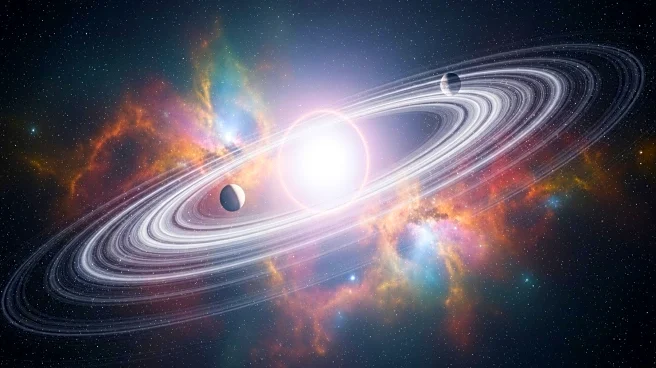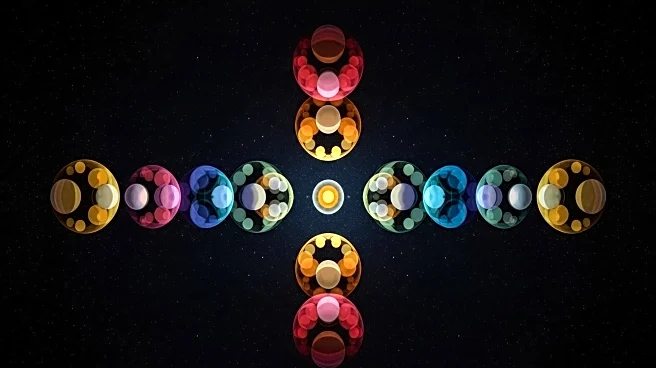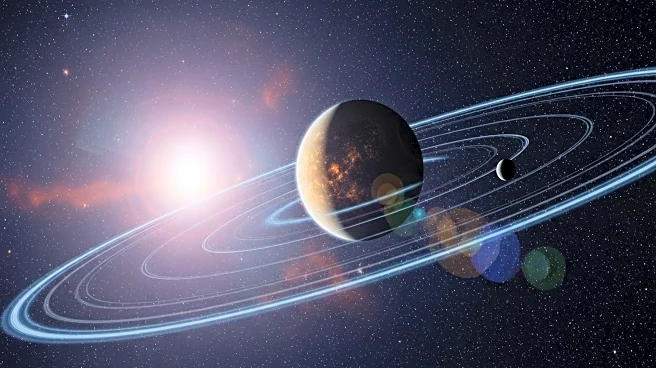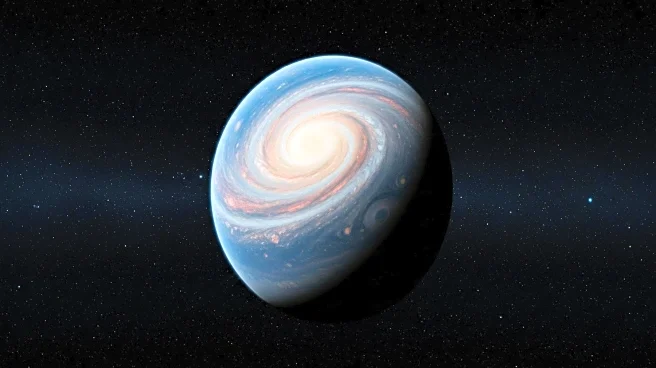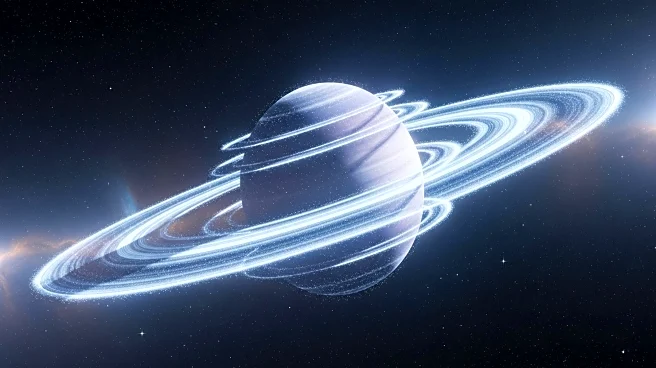What's Happening?
Astronomers have identified a young exoplanet named WISPIT 2b, located approximately 430 light-years from Earth, within a multi-ringed protoplanetary disk around a young star. This discovery was made using the Very Large Telescope (VLT) in Chile. WISPIT 2b, a gas giant similar in size to Jupiter, is only about 5 million years old, making it significantly younger than our solar system, which is around 4.6 billion years old. The planet is actively gathering material from its surrounding disk, carving a channel as it orbits its parent star, WISPIT 2. This marks the first confirmed detection of a planet within a multi-ringed protoplanetary disk, which features multiple gaps and channels. The discovery provides a unique opportunity to study the interactions between planets and their disks, potentially offering insights into the evolution of planetary systems.
Why It's Important?
The discovery of WISPIT 2b is significant as it provides a rare glimpse into the early stages of planet formation. Understanding how young planets interact with their protoplanetary disks can shed light on the processes that lead to the diverse range of exoplanet systems observed in the universe. This research could help explain why many exoplanet systems differ from our own solar system. The findings may also serve as a benchmark for future studies in the field of astrophysics, offering a model for examining the dynamics of planet-disk interactions. The insights gained from studying WISPIT 2b could influence theories on planet formation and the development of planetary systems.
What's Next?
The discovery of WISPIT 2b is expected to spark further research and discussion within the astrophysics community. Researchers may conduct additional observations to better understand the characteristics and behavior of WISPIT 2b and its protoplanetary disk. The system could become a focal point for studies on planet formation, potentially leading to new breakthroughs in the field. As the planet continues to gather material, scientists will likely monitor its development to gain deeper insights into the processes that shape young planetary systems. The findings may also inspire new methodologies for detecting and studying exoplanets in similar environments.
Beyond the Headlines
The discovery of WISPIT 2b highlights the importance of advanced telescopic technology in expanding our understanding of the universe. The ability to capture images of young planets in formation provides valuable data that can refine existing models of planetary evolution. This research underscores the collaborative efforts of international teams in advancing the field of astrophysics. The study of WISPIT 2b may also contribute to broader discussions on the origins of planetary systems and the potential for life beyond Earth, as understanding the formation of planets is crucial to identifying habitable environments.
